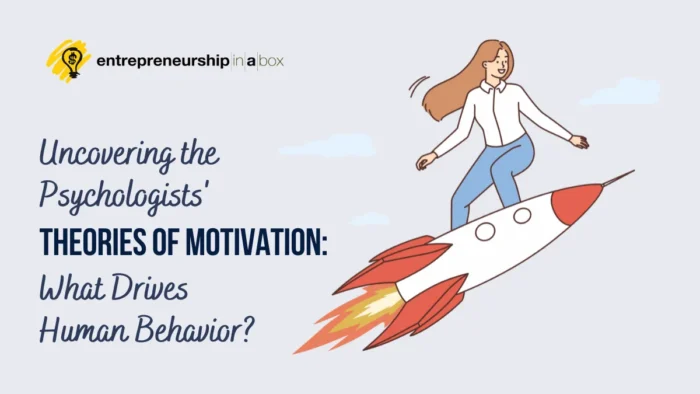Uncovering the driving force behind human behavior has been a longstanding goal of psychologists. From early theorists like Maslow and Freud to modern psychologists, the search to understand what motivates individuals has shaped many theories. How do our needs, desires, ambitions, and fears influence our actions? This article delves into the intriguing domain of psychological theories of motivation, seeking to look at the light on the complex factors that underpin human beings’ behavior.
As we undertake this exploration, we’ll navigate through the evolution of motivational theories, uncovering the important principles that continue to shape our understanding of human motivation. Whether it’s Maslow’s hierarchy of needs, Skinner’s operant conditioning, or the self-determination theory, these frameworks offer deep insights into the complexities of human motivation.
If you are in managerial and leadership positions, you must better understand human beings, knowing the psychological factors that drive them. The best way is to learn different need theories of motivation. So, let’s dive in.
Theories of Motivation by Prominent Psychologists
Understanding motivation has been a subject of fascination for psychologists, leading to the researchers’ developed theories by most prominent psychologists.
- Maslow’s hierarchy of needs theory
- Herzberg’s Two-Factor Theory
- Vroom’s Expectancy Theory
- Skinner’s Operant Conditioning
- Self-Determination Theory
- McClelland’s Need Theory
- ERG Theory
- McGregor’s Theory X and Theory Y
Maslow’s Hierarchy of Needs Theory
One of the most notable theories is Abraham Maslow’s hierarchy of needs theory.
Abraham Maslow, a twentieth-century American psychologist, is well-known for developing the theory of human motivation known as Maslow’s Hierarchy of Needs. Maslow, born in 1908, was deeply interested in understanding what drives human behavior. His groundbreaking work, “A Theory of Human Motivation,” published in 1943, laid the foundation for his motivational framework.
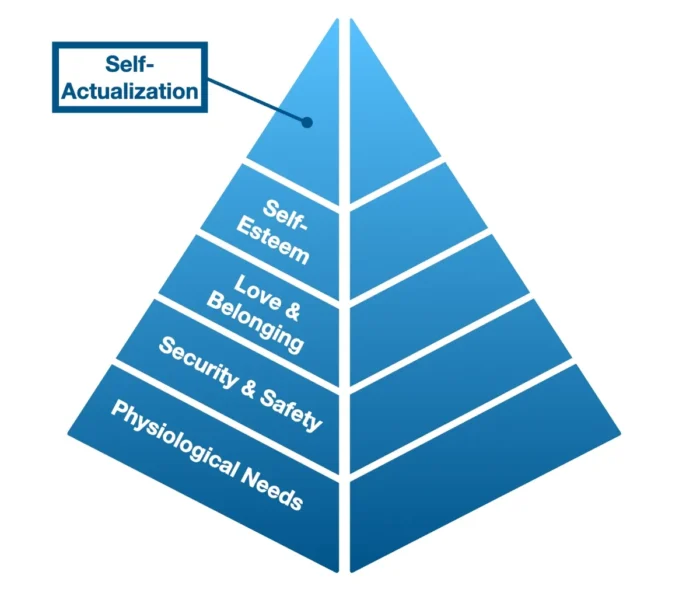
Maslow’s hierarchy is often illustrated as a pyramid, with basic needs at the bottom and higher-level needs at the top. The theory suggests that people are motivated to fulfill these needs in a specific order, starting from physiological needs at the base, moving upwards to safety needs, love and belonging, esteem, and finally, self-actualization needs.
- Physiological Needs: These are the most basic human needs necessary for survival, such as food, water, sleep, and air. Without these, individuals cannot function. For instance, someone starving will primarily focus on obtaining food.
- Security and Safety Needs: People seek security and stability once physiological needs are met. This can include physical safety, financial security, health, and overall well-being. An example might be someone taking a stable job to ensure a consistent income.
- Love and Belonging: When safety needs are satisfied, individuals seek love, friendship, and a sense of belonging. This could manifest as joining clubs, maintaining close friendships, or building a family.
- Self-Esteem: This level involves the desire for respect, recognition, and appreciation from others, as well as self-respect. For example, an employee might strive to excel at work to gain recognition and respect from colleagues and superiors.
- Self-Actualization Needs: At the pinnacle of the hierarchy, self-actualization needs involve realizing one’s full potential and seeking personal growth, fulfillment, and creativity. An artist might strive towards creating their best work, not for recognition or financial gain, but to fulfill their creative potential.
Maslow’s theory is widely used in various contexts. For example, in a business setting, understanding these needs can help managers motivate employees effectively. Suppose an employee’s basic needs like security and safety are unmet. In that case, they’re not earning enough to cover their living expenses. In such a way, they’re unlikely to be motivated by opportunities for self-actualization needs like personal growth opportunities.
Related: The Team Effectiveness and Different Roles in Teams That Win
Criticisms of Maslow’s Hierarchy of Needs Theory
While Maslow’s theory has been widely influential in various fields, including psychology, business, and education, it is not without its critics. Several vital criticisms have been raised over the years:
- Lack of Empirical Support: One of the primary criticisms of Maslow’s theory is its lack of empirical evidence. While the hierarchy of needs, starting with physiological needs and finishing with self-actualization needs, is intuitively appealing, it has been difficult to test scientifically. This is due to the subjective nature of the needs and the difficulty in measuring when a particular need has been sufficiently satisfied.
- Over-simplification of Human Motivation: Critics argue that Maslow’s theory of linear progression from one human’s needs to the next oversimplifies the complex nature of human motivation. In reality, people often seek multiple needs simultaneously, not only physiological needs or only self-esteem needs. Also, the importance of each need can vary significantly among individuals.
- Cultural Bias: Maslow’s hierarchy of needs has also been criticized for having a Western bias. His model assumes individualistic values such as self-actualization, which may not be as crucial in collectivist cultures where community and cooperation might take importance.
- Neglect of Unconscious Motives: Some critics, particularly those from psychoanalytic backgrounds, argue that Maslow’s theory neglects the role of unconscious motives in driving the behavior of human beings.
The Expanded Hierarchy of Needs Theory
Maslow’s Hierarchy of Needs has been a central subject of discussion since the 1970s, especially regarding the need that motivates the behavior of human beings. Despite its popularity, there have been debates on the comprehensiveness of the hierarchy in capturing all the elements of human needs.
Several experts suggest that adding three new levels would provide a more holistic understanding of human behavior. The additional levels would include cognitive, aesthetic, and transcendence needs:
- Cognitive Needs: After self-esteem needs are satisfied, it is suggested that individuals develop a need for knowledge and understanding. People start seeking answers to fundamental questions about life, existence, and everything in between. For example, someone might start reading philosophy or scientific literature to satisfy their cognitive needs.
- Aesthetic Needs: Once cognitive needs are met, individuals begin to appreciate and search for beauty, balance, and form. This could manifest in many ways, such as developing an interest in art, music, literature, or nature. For example, someone may start visiting art galleries or spend time gardening to fulfill their aesthetic needs.
- Transcendence: At the peak of the expanded hierarchy, after self-actualization needs are satisfied, there comes transcendence needs that involve helping others to achieve self-actualization. It’s about contributing to the realization of others’ potential. This could be seen in mentors guiding mentees or philanthropists supporting causes that help others achieve their dreams.
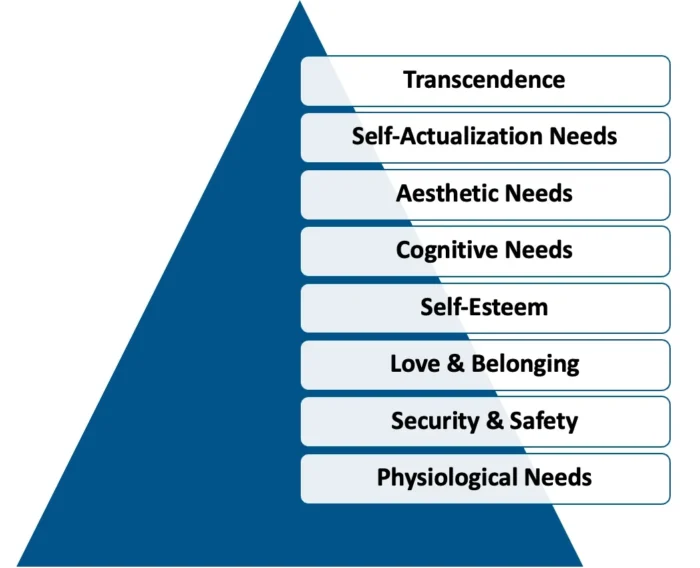
This expanded model suggests that fundamental human motivation doesn’t stop at self-actualization. Instead, it continues towards the pursuit of knowledge, appreciation of beauty, and the desire to help others achieve their potential.
Related: Find Your Rhythm: How Inspirational Music Increases Productivity at Work
Herzberg’s Two-Factor Theory
Frederick Herzberg, a renowned psychologist, proposed the Two-Factor Theory, also known as the Motivation-Hygiene Theory, in the 1950s, which distinguishes between hygiene factors and motivators in the workplace. This theory is a cornerstone in understanding employee motivation and job satisfaction.
Herzberg’s theory, sometimes called Herzberg’s dual factor theory, divides workplace factors into two categories: Hygiene factors and Motivation factors.
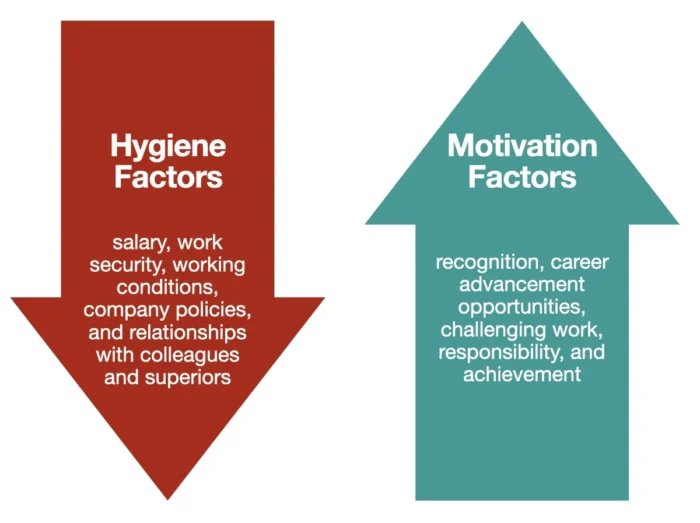
Hygiene Factors:
These are the basic elements that, if missing or inadequate, will cause employee dissatisfaction. However, their presence doesn’t necessarily lead to satisfaction; it simply prevents dissatisfaction. Hygiene factors include salary, work security, working conditions, company policies, and relationships with colleagues and superiors.
For example, employees might feel dissatisfied if an organization fails to provide a safe working environment. However, a safe environment alone won’t satisfy or motivate them – it’s considered a baseline expectation.
Motivation Factors:
These are elements that, when present, actively create job satisfaction and motivate employees to work harder and perform better. These include recognition, career advancement opportunities, challenging work, responsibility, and achievement.
Let’s say an employee is given a challenging project that allows them to use their skills fully. Upon successful completion, they receive recognition from the frequent and immediate feedback from their manager. This scenario likely leads to job satisfaction and further motivates the employee to continue performing at a high level.
Hygiene factors, such as working conditions and job security, are necessary to prevent dissatisfaction, while motivators, like recognition and responsibility, are essential for enhancing job satisfaction and motivation.
So, Herzberg’s Two-Factor Theory suggests that merely eliminating factors causing job dissatisfaction (hygiene factors) won’t necessarily create job satisfaction. Organizations must focus on implementing and enhancing motivating factors to motivate employees truly.
Vroom’s Expectancy Theory
Vroom’s Expectancy Theory is a motivation theory that explains how an individual makes decisions based on the perceived outcomes of their actions. Victor Vroom, a business school professor at the Yale School of Management, proposed this theory in 1964.
Victor Vroom’s Expectancy Theory emphasizes the role of individual beliefs and expectations in motivating behavior. According to Vroom, individuals are motivated to act based on their expectancy of achieving a desired outcome and the value they place on that outcome. This theory highlights the importance of perceived effort and the belief that effort will lead to performance and desired outcomes.
The theory can be broken down into three key components: expectancy, instrumentality, and valence.
- Expectancy: Expectancy refers to an individual’s belief that their efforts will lead to a desired level of performance. In other words, if I work harder, will it lead to better performance? This belief can be influenced by factors such as having the right resources, skills, or support needed to increase performance.
- Instrumentality: This is the belief that if you perform at a certain level, will result in specific outcomes or rewards. For example, if I meet my sales target, will I get the expected bonus or promotion? This belief is often connected to trust in the process and fairness of reward distribution within an organization.
- Valence: This refers to the value an individual places on the rewards of an outcome. Essentially, it answers the question: Do I find the potential reward valuable or worthwhile? This could range from monetary rewards, such as salary increases and bonuses, to intrinsic rewards, like personal satisfaction or career progression.
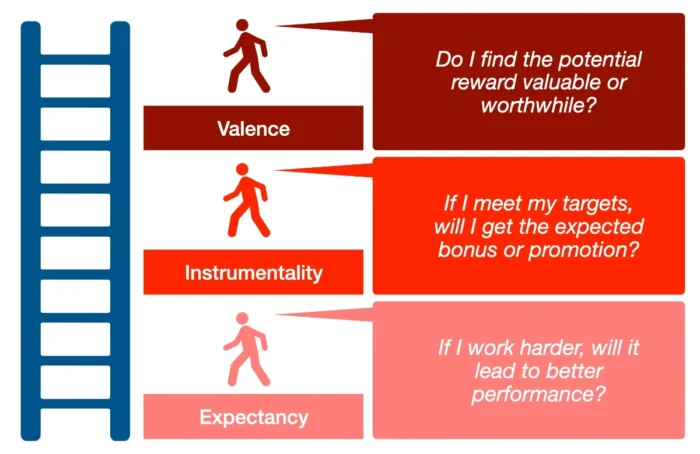
According to Vroom’s theory, for an individual to be motivated to perform a task, all three components must be high. If any component is low, motivation will decrease.
For instance, an employee might believe that putting extra effort into a project (high expectancy) will lead to recognition from their manager (high instrumentality). However, if they don’t value the manager’s praise (low valence), their overall motivation to put in extra effort decreases.
Understanding and applying Vroom’s Expectancy Theory, managers and leaders can better motivate their teams by ensuring that the effort employees put into their work will lead to performance (expectancy), that performance will lead to outcomes (instrumentality), and that these outcomes are valued (valence).
Skinner’s Operant Conditioning
Operant Conditioning is a learning theory proposed by B.F. Skinner, a prominent behavioral psychologist. This theory suggests that behavior is learned through rewards and punishments.
Skinner’s Operant Conditioning Theory is widely used in various settings, from classrooms to workplaces and even in behavior therapy. It offers a framework for understanding how consequences influence behavior, providing insights into ways of effectively managing individuals and teams.
According to Skinner, behavior is shaped by its consequences, and individuals learn to behave in specific ways based on the outcomes of their actions.
Skinner’s theory revolves around three main concepts: positive reinforcement, negative reinforcement, and punishment.
- Positive Reinforcement: This involves adding a rewarding stimulus to encourage a desired behavior. For example, a manager might reward an employee for completing a task ahead of schedule. The bonus is a positive reinforcement intended to increase the likelihood of the employee finishing future tasks on time. Punishment aims to decrease undesired behavior by applying negative consequences, and extinction involves removing any reinforcement to diminish a behavior.
- Negative Reinforcement: This involves removing an unpleasant stimulus to encourage a particular behavior. For instance, if employees consistently meet their targets, they might be allowed to leave early on Fridays. Removing the obligation to work total hours on Friday is a negative reinforcement3.
- Positive Punishment: This involves adding an unpleasant stimulus to discourage an undesired behavior by applying negative consequences for operants. Despite the term “positive,” it does not imply something good or beneficial. Instead, “positive” refers to adding a stimulus following a behavior. For example, if an employee (operant) consistently arrives late for meetings. To discourage this lateness, their manager might implement a policy where latecomers must note the meeting minutes for that day- a task that typically is considered boring. Introducing this task (unpleasant stimulus) after the behavior (arriving late) is an example of positive punishment. The expectation is that the employee will be less likely to arrive late in the future to avoid the added task.
- Negative Punishment. Contrary to what the term may suggest, “negative” does not denote something bad or harmful. Instead, it refers to removing or subtracting a stimulus following a behavior. For example, an employee frequently uses their phone during work hours. To discourage this behavior, their manager might implement a policy where employees noticed using their phones for non-work purposes have their internet access revoked for the rest of the day. Removing internet access (a pleasant stimulus) following the behavior (using the phone for personal reasons) is a negative punishment. The expectation is that the employee will be less likely to misuse their phone in the future to avoid losing internet access.
Understanding and applying this theory can help managers motivate their team, improve performance, and create a more productive work environment in a professional setting. By carefully considering their reinforcements and punishments, managers can guide their team’s behavior toward desired outcomes.
Self-Determination Theory
Self-Determination Theory is a psychological framework developed by psychologists Edward Deci and Richard Ryan. This theory proposes that people are driven to grow and achieve fulfillment through three innate psychological needs: autonomy, competence, and relatedness.
Related: 9 Self-Management Skills and How to Improve Them
- Autonomy: This refers to our need for freedom and the ability to make choices that align with our personal values and interests. When we feel autonomous, we’re more likely to be motivated because we’re doing things that are meaningful to us.
- Competence: This refers to our desire to interact with the environment effectively. We’re motivated when we feel competent or believe we have the skills and abilities to complete a task or challenge successfully.
- Relatedness: This refers to our need to feel connected to others, to care for others, and to feel that others care for us. Feeling a sense of belonging or connectedness can also motivate us to engage in certain behaviors or activities.
Understanding self-determination theory can help managers create an environment that promotes these three needs. For example, managers can encourage autonomy by allowing employees to make decisions about their work. They can foster competence by providing training and feedback and promote relatedness by building a supportive and collaborative team culture.
Research has shown that when these three needs are met, individuals tend to show greater self-motivation, engagement, performance, and well-being. Therefore, adopting these principles can lead to a more motivated, productive, and satisfied workforce.
McClelland’s Need Theory
McClelland’s Need Theory, also known as the Three Needs Theory, was developed by psychologist David McClelland. This theory suggests that individuals are motivated by three primary needs: the need for achievement, the need for affiliation, and the need for power. Each of these needs influences our behaviors and motivations in different ways.
- Need for Achievement (nAch): The need for achievement relates to the desire to excel, succeed, and accomplish challenging goals. Individuals with a high need for achievement prefer tasks that are moderately challenging, allowing them to take personal responsibility for their work and receive feedback on their performance.
- Need for Affiliation (nAff): Affiliation reflects the need for positive relationships, social interaction, and a sense of belonging. People with a high need for affiliation value building strong relationships, being part of a group and being loved and recognized by others.
- Need for Power (nPow): Power encompasses the drive to influence and control others, as well as the desire for recognition and status. Those with a high need for power are interested in competition and status and seek positions where they can exert control.
For example, an employee with a high need for achievement might be motivated by challenging projects and opportunities for personal growth. Employees with a high need for affiliation might thrive in a collaborative team environment. In contrast, an employee with a high need for power may be motivated by opportunities for advancement and leadership roles.
ERG Theory
Psychologist Clayton Alderfer developed the ERG Theory of motivation as an extension and refinement of Abraham Maslow’s Hierarchy of Needs. The acronym “ERG” stands for Existence, Relatedness, and Growth, which are the three core groups of needs identified by Alderfer:
- Existence Needs: These are the physical basic needs for human survival, similar to Maslow’s physiological needs and safety needs. They include necessities like food, water, shelter, safety, and security.
- Relatedness Needs: These needs encompass our interpersonal relationships and the desire for social recognition, aligning with Maslow’s belongingness and esteem needs. They involve our interactions with family, friends, colleagues, and the broader society.
- Growth Needs: These are our intrinsic desires for personal development and self-fulfillment. They’re similar to Maslow’s self-actualization and self-esteem needs, including the desire to learn new things, take on challenges, and make creative or productive contributions.
A key difference between Alderfer’s ERG Theory and Maslow’s hierarchy of needs is that the ERG Theory suggests that these need categories aren’t strictly hierarchical. In other words, an individual doesn’t necessarily have to fully satisfy one category of needs from ERG theory before moving on to the next. Additionally, if a higher-level need cannot be fulfilled, an individual may regress to focus more on lower-level needs, a process known as “frustration-regression”.
Suppose an employee who has been with the company for several years feels that his growth needs aren’t being met. He’s ambitious and eager to advance but feels stuck in his current role. According to the ERG theory, he may experience “frustration-regression,” where his unsatisfied growth needs cause him to focus more on his relatedness and existence needs. He may start prioritizing job security over career advancement or investing more time in workplace relationships, seeking satisfaction in these areas instead.
Understanding this, the management could intervene by discussing his career aspirations, offering him more challenging assignments, giving employees critical feedback, or providing a mentor to guide his career development. Addressing his growth needs can help enhance his job satisfaction and motivation.
This example illustrates how understanding and applying the ERG Theory can move organizational behavior and help create a more motivated, satisfied, and productive workforce.
McGregor’s Theory X and Theory Y
Developed by social psychologist Douglas McGregor in the 1960s, Theory X and Theory Y are two contrasting models that explain how managers’ perceptions of employee motivation can affect their leadership style.
Theory X posits a rather pessimistic view of employees. It assumes that workers naturally dislike work and will avoid it whenever possible. Managers who believe in this theory often use an authoritarian style of management. They believe that employees must be forced, controlled, or threatened with punishment to ensure task completion. In essence, Theory X assumes that people are motivated primarily by salary and job security and have little ambition.
On the other hand, Theory Y offers a more optimistic perspective. It suggests that employees are not only willing to work but also find work natural and fulfilling. Managers who align with this theory often adopt a more participative leadership style. They believe that, given the right conditions, employees will seek responsibility to satisfy their social, esteem, and self-actualization needs. Theory Y assumes that employees enjoy their mental and physical work duties, are internally motivated to pursue their goals, and possess creative problem-solving abilities.
Understanding these theories can help managers adopt the most effective management style based on their team’s characteristics. For example, a manager might use a Theory X approach for routine tasks requiring little creativity. In contrast, a Theory Y approach could be more suitable for tasks requiring innovation and collaboration.
It’s important to note that neither theory is universally correct or incorrect. Instead, they offer different perspectives on human nature and motivation, and the most effective approach often lies somewhere in between, depending on the specific circumstances.
Applying Motivational Theories in Real-life Scenarios
As we explore the various psychological theories of motivation, it becomes evident that each theory offers unique insights into the complex dynamics of motivation. While Maslow’s hierarchy of needs emphasizes the progression of needs from basic survival to self-actualization, Vroom’s Expectancy Theory focuses on the rational evaluation of effort and outcomes.
Similarly, Skinner’s Operant Conditioning underscores the role of reinforcement and consequences in shaping behavior, while McClelland’s Need Theory highlights the influence of specific needs on motivation. By comparing and contrasting these theories, we comprehensively understand the multilayered nature of motivation.
Each theory contributes valuable perspectives on what drives human behavior, shedding light on the diverse factors influencing individuals’ actions and choices. By synthesizing these theories, we can develop a holistic view of motivation, recognizing the interplay of cognitive, emotional, and social factors in shaping human behavior.
Conclusion and Implications for Understanding Human Behavior
In conclusion, exploring psychological theories of human motivation offers profound insights into the intricate dynamics that drive human behavior. From Abraham Maslow’s hierarchy, which emphasizes the hierarchical progression of needs, to Skinner’s focus on the impact of consequences, or ERG theory, which identifies three core groups of needs, each theory contributes to a comprehensive understanding of what motivates individuals in various contexts.
The practical application of these motivational theories provides a roadmap for understanding and influencing behavior in real-life scenarios. By aligning strategies with the principles of these theories, individuals and organizations can foster motivation, engagement, and positive outcomes.

